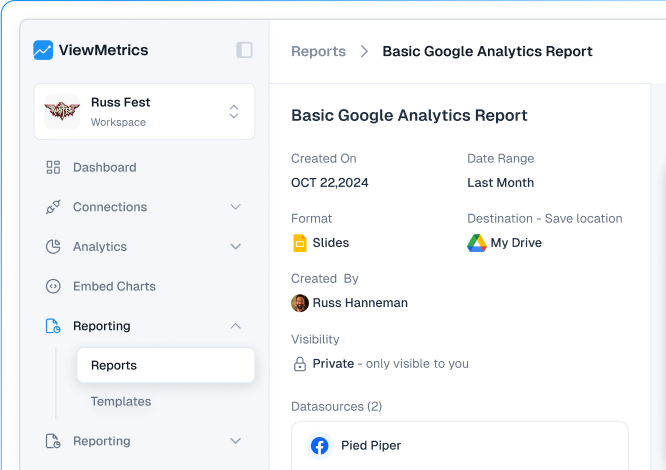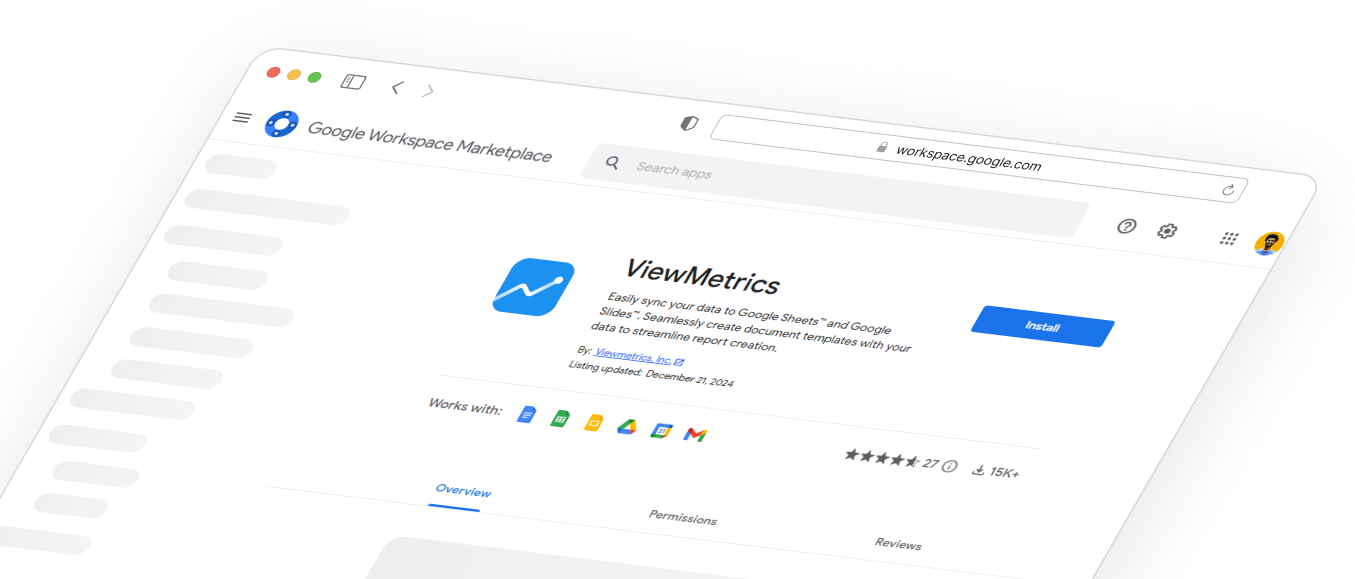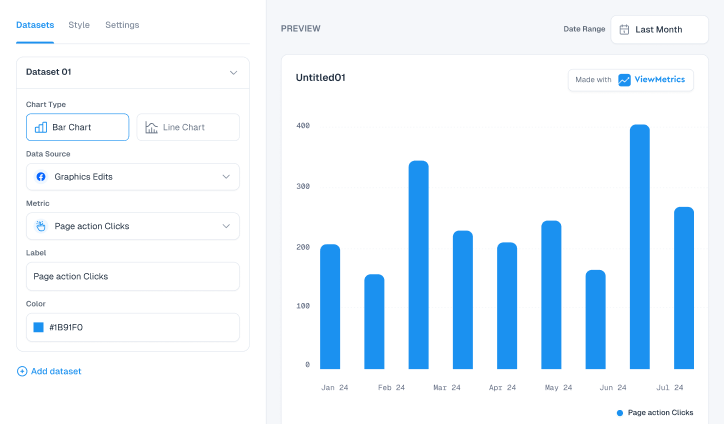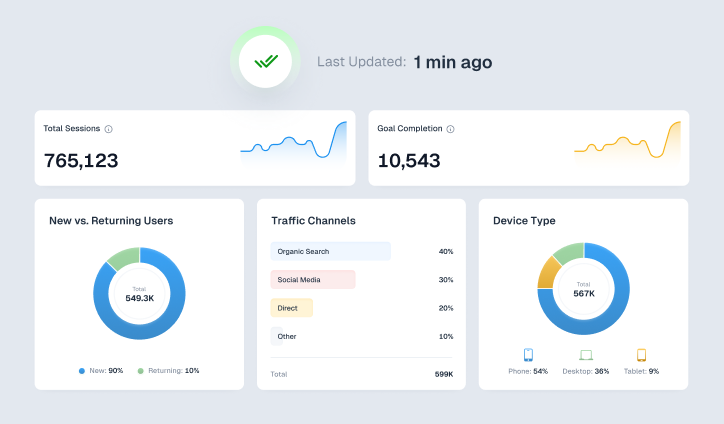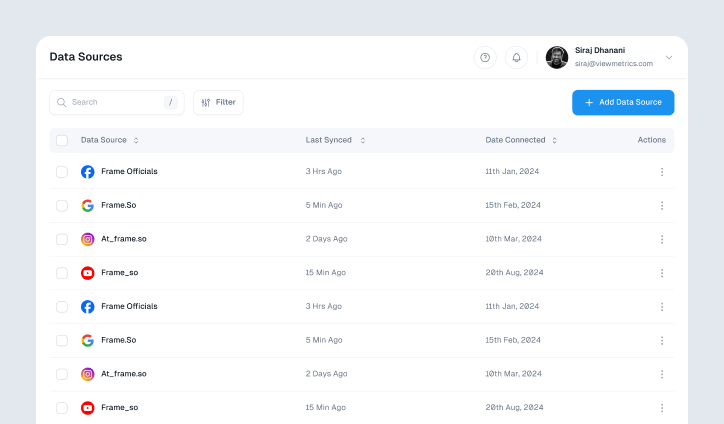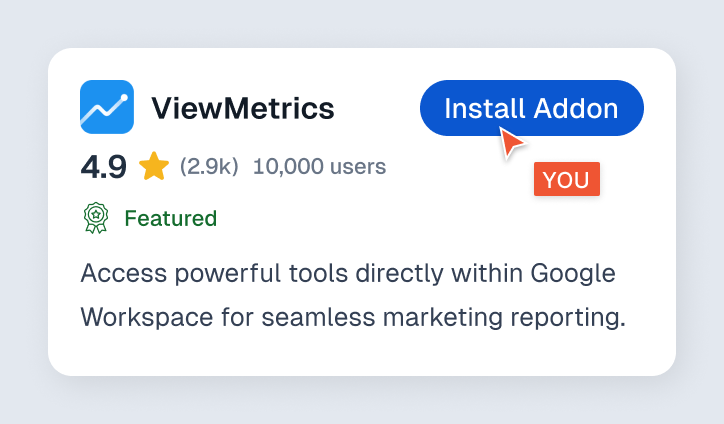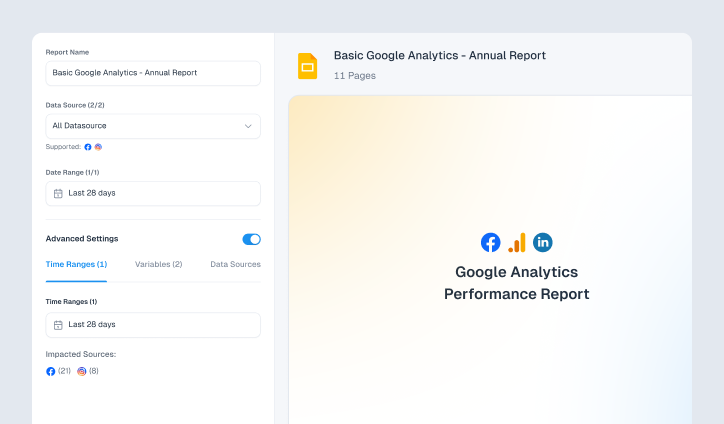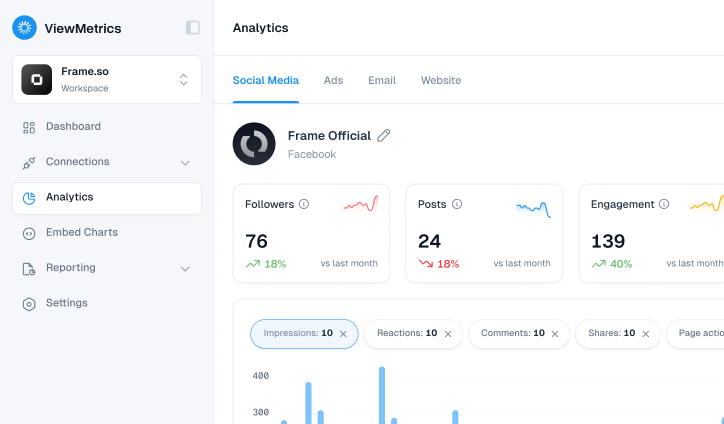Summary for the Blog
- Marketing results are crucial for strategic decision-making, performance measurement, and understanding your return on investment (ROI).
- Key metrics for measuring results include organic traffic, click-through rate (CTR), conversion rate, and ROI.
- The article highlights specific key performance indicators (KPIs) for different marketing channels like paid online advertising, SEO, social media, and email marketing.
- Tools such as Analytics Platforms (ViewMetrics, Google Analytics), social media analytics, and CRM software are useful for measuring these results.
Marketing results are a critical element in any business; they help understand how successful the marketing initiatives are. Marketing results are the final outcome or achievements for calculated marketing strategies and can be measured precisely to plan how efforts can be put in the right direction to yield maximum benefit and impact.
This article discusses the significance of marketing results and the metrics used to accurately measure marketing outcomes. Let’s get started.
Importance of Measuring Marketing Results
Businesses may make wise judgments, enhance their marketing plans, and eventually accomplish their goals by monitoring and evaluating marketing performance. Let’s understand this in detail.

1) Strategic Decision-Making
- Identifying Strategies: It helps companies identify the best-performing and most lucrative strategy for marketing which is also practical.
- Optimizing Resource Allocation: With the help of marketing results, businesses can make better judgments in terms of what resources to allocate to each campaign.
- Adjusting Course: Marketing results help marketers immediately respond to market trends and align strategies as per business objectives.
2) Performance Measurement
- Tracking Progress: Marketing results allow monitoring of the ongoing marketing progress against the defined objectives of the businesses.
- Benchmarking Performance: With the help of marketing results, businesses can draw comparisons with the industry competitors and understand where they stand in the market.
- Identifying Areas for Improvement: The results of marketing activities highlight the areas where marketing teams must increase effort.
3) Accountability and ROI
- Justifying Marketing Spend: From the business point of view, the results demonstrate the value of marketing investments to stakeholders.
- Measuring ROI: Businesses can calculate the return on marketing investments to assess the campaign efficiencies.
- Optimizing Spend: Marketing results help determine whether to increase or decrease spending on campaigns. They also help correctly plan the budget of similar campaigns in the future.
4) Customer Insights
- Understanding Customer Behavior: Marketing results give insights into customer preferences, interests, and buying habits.
- Tailoring Marketing Efforts: With the help of results, you can discover the kind of campaigns that work for different audience sets, which can help tremendously in creating more targeted and effective marketing campaigns.
- Improving Customer Satisfaction: By analyzing how well a marketing activity performs, businesses can gauge overall customer satisfaction.
5) Continuous Improvement
- Identifying Trends: Understanding how well your marketing campaigns work helps in continuous improvement to stay aligned with market trends.
- Optimizing Campaigns: The results generally help make data-driven adjustments to improve the performance of the ongoing campaigns.
- Fostering Innovation: Marketing results can give businesses the confidence for further experimentation and innovation in marketing.
Metrics to Measure Marketing Results
The following are the metrics that offline and online marketing results are measured across:
- Organic Traffic: It is the number of people who have landed on a particular website from unpaid search results
- Keyword Rankings: This represents the position of a website – known as the organic website ranking – when searching for a particular keyword on a search engine.
- Click-Through Rate (CTR): CTR is the percentage of users who click on a particular link to land on a desired website or landing page of your business. A high CTR suggests that the content is excellent and relevant for the users.
- Bounce Rate: It shows the interests of the visitors for a particular page or website. The sooner a visitor exits your website, the higher the bounce rate.
- Time on Site: Time on site is the average time visitors spend on a website.
- Conversion Rate: The conversion rate is the percentage of visitors who complete a desired action, such as making a purchase or filling out a form.
- Cost per Acquisition (CPA): It refers to the average expense of obtaining a client via advertising campaigns.
- Return on Investment (ROI): ROI is the metric used to assess the profitability of marketing efforts that contrasts the amount of money raised with the expenses of the campaign.
- Impressions: Impressions are denoted as the number of times a marketing campaign, ad, or content is displayed to users. It signifies the reach of your campaigns.
- Clicks: This is the total number of clicks by visitors on a particular ad/content.
- Cost per Click (CPC): CPC denotes the cost that a company pays to advertising platforms for every click on their ad. It can be used to calculate ROI.
- Cost per Conversion (CPC): This is a metric that denotes the cost required to convert a visitor into a consumer.
- Social Reach: Social reach is the measure of users who viewed your content/ad on social media platforms.
- Social Engagement: This refers to the level of interaction through likes, shares, and comments on social media content.
- Cost per Lead (CPL): CPL is the average cost of acquiring a lead via marketing efforts.
- Cost per Win (CPW): CPW is the cost incurred to close a sale as well as to secure a new customer.
- Email Open Rate: This is the average rate that reflects the interest of the audience in a brand. Also, the email open rate compared to the number of conversions can reflect the success of a campaign.
- Unsubscribe Rate: This is the average rate at which the receivers choose not to receive emails from a business. This can help in eliminating the wrong audience and build a more targeted audience set.
View All Your Marketing and Website Data — Instantly
Connect Instagram, Mailchimp, Google Analytics & more
Pre-built dashboards, no setup needed
Save hours on reporting every week
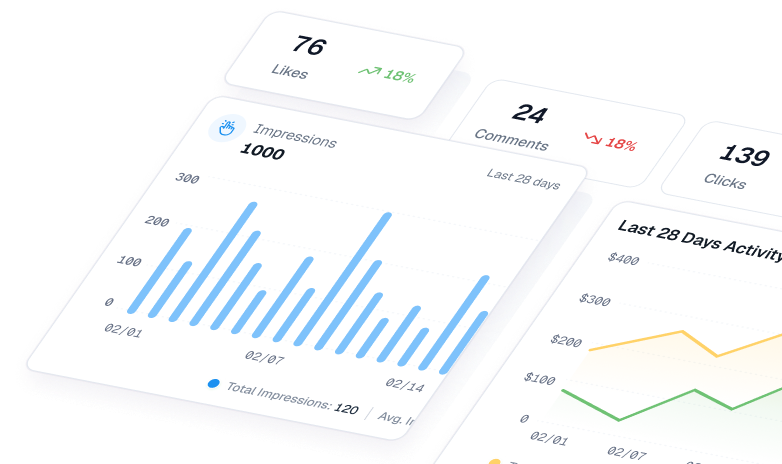
Measuring KPIs Based on Marketing Type
Let’s discuss the KPIs that reflect the success of a marketing campaign.
Paid Online Advertising Metrics
With these online marketing results metrics, businesses can track the performance and cost-effectiveness of paid ads. This is the cost you pay for targeted visitors to perform an action, such as visiting your website, and can help calculate the returns. Here are the key metrics used in paid online marketing:
- Impressions
- Clicks
- Click-through rate (CTR)
- Cost per click (CPC)
- Cost per conversion (CPC)
- Conversion rate
- Return on investment (ROI)
Search Engine Optimization (SEO) Metrics
This is the metric used to track SEO performance and progress. It takes into account the organic search data to help businesses understand how well their web pages or websites are performing on various search engine platforms. Here are the SEO metrics that we must look at:
- Organic traffic
- Keyword rankings
- Click-through rate (CTR)
- Bounce rate
- Time on site
- Conversion rate
- Cost per acquisition (CPA)
- Return on investment (ROI)
Social Media Marketing Metrics
Social media marketing metrics enable brands to monitor their social presence and impact. Companies can assess audience interaction, view engagement with various social media posts, and enhance content to increase conversions by analyzing key metrics, such as:
- Social reach
- Social engagement
- Conversion rate
- Cost per lead (CPL)
- Cost per win (CPW)
- Return on investment (ROI)
Read more on Social Media KPIs here!
Email Marketing Metrics
These metrics mainly assist companies in evaluating the effectiveness of their email marketing efforts, tracking user interaction, and adopting more effective open-rate tactics. Here are the key email marketing metrics:
- Email open rate
- Click-through rate (CTR)
- Bounce rate
- Conversion rate
- Unsubscribe rate
- Cost per acquisition (CPA)
- Return on investment (ROI)
Tools for Measuring Marketing Results

Here are some tools to measure online marketing results:
- Analytics Platforms: Popular analytics tools, such as ViewMetrics, Ahrefs, GSC, Google Analytics, and SEMRUSH, can be used to monitor user behavior, website traffic, and conversion rates.
- Social Media Analytics: Social media platforms usually have their own analytics platforms, such as Instagram Insights, Twitter Analytics, and Facebook Insights.
- Email Marketing Software: Email marketing tools like Mailchimp, HubSpot, and Constant Contact can provide insights on email open rates, click-through rates, and unsubscribe rates.
- Customer relationship management (CRM) software: CRMs assist in monitoring sales, prospects, and customer contacts to assess marketing efficacy.
How Does ViewMetrics Measure Marketing Results?
ViewMetrics is a one-stop solution for managing marketing results irrespective of the type of marketing. It removes the need to manually compile data from multiple marketing tools by automating data collection. It also enhances report development with its pre-built report templates and the ability to import templates from Google Sheets or Google Slides.
For quick and easy branding and customization, users can also directly embed charts and other data visualization elements into Notion documents, websites, and project management tools.
It is of high importance to analyze marketing metrics to get a clear picture and lead your marketing efforts in the right direction. So, based on your long-term objectives, you can use marketing results to make data-driven decisions. This article covers detailed KPIs of each marketing method, so feel free to bookmark it for later.


